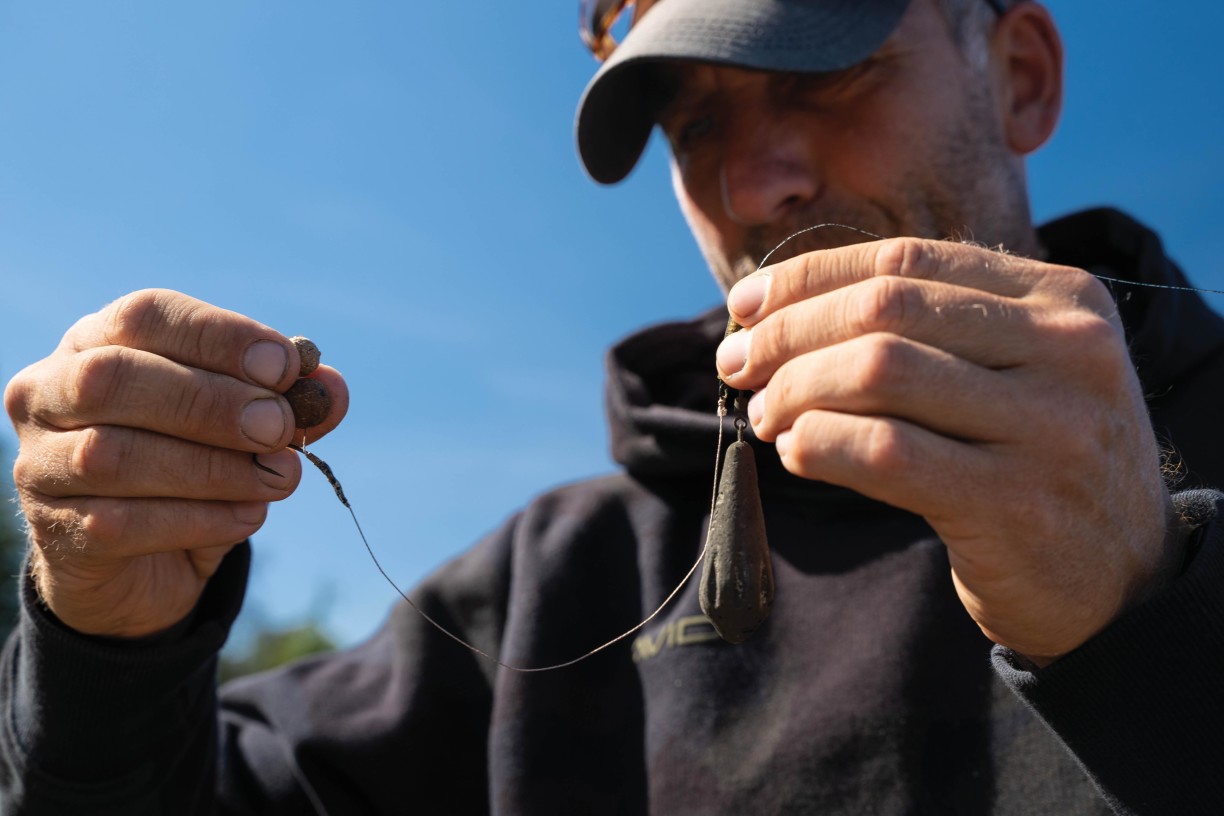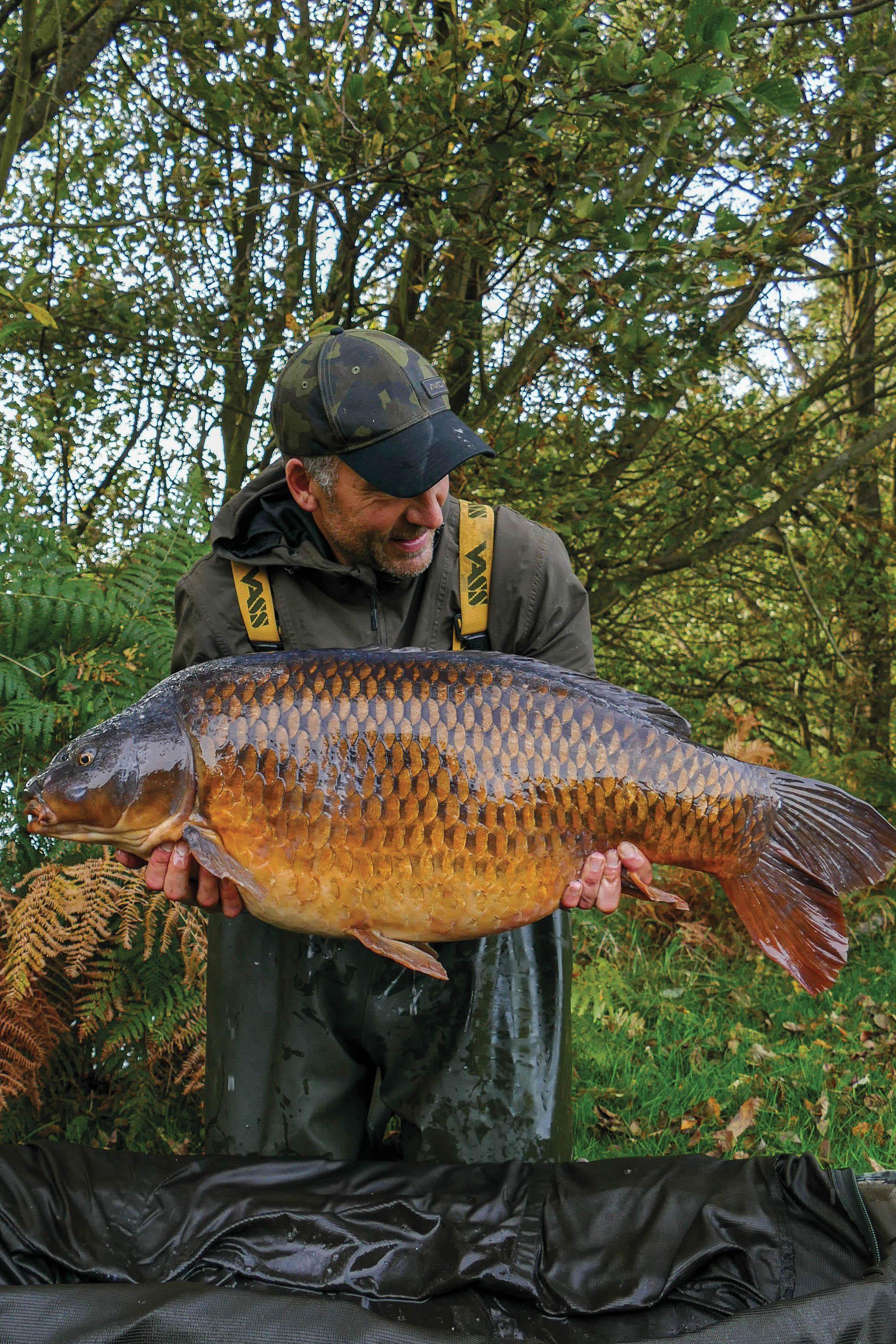End Tackle According To... Simon Crow
When it comes to a no-nonsense approach to carp fishing, no one does it better than Simon Crow!

The game-changing rig moment which changed everything for me was around 1988 when I saw an old boy empty one of my local lakes using a 10-inch long piece of Dacron hooklink and a Richworth Tropicana bottom bait straight out of the bag. All the young lads used to ignore him sat in his ‘bird cage’ bivvy because he didn’t have the latest gear or rigs. We all thought we were better than him because he wasn’t fashionable, when in fact we were all useless novices. Even as far back as then, rig fashions existed. If I remember right, it was all about the bent hook rig in those days. If you weren’t using it, you were a crap angler, but we were made to eat those words by that old boy! He didn’t even take a photo of the fish he caught—simply unhooking them and slipping them back. From that moment I realised there was more to successful carp fishing than using the latest rig.
The last rig-related item I bought and loved was over 30+ years ago and was a hook sharpening stone from Nige Williams Tackle in Wolverhampton. I still have that stone in my tackle bag today and still use it regularly. Hooks these days are a lot more hardwearing than in the 80s/90s but they still get burred up on stones/gravel etc. I hate tying rigs just for the sake of it. I see lads who change hooks after every fish but I always think it’s unnecessary and just a confidence crisis on their part. There’s nothing wrong with using a stone to tidy up a used hook. I’ve had multiple catches on the same hook. The key is all about not weakening it too much through excessive filing.
On my wishlist for a future end tackle item is something braid-related… I’m a massive fan of supple braid but the downside of it, is it can tangle. Obviously there’s things we can do to limit the tangling, like feathering the cast, using PVA bags, hitting the clip, bait boats etc. but I’d love it if there was an anti-tangle braid on the market. Kryston used to sell PVA gel that you rubbed on the braid to stop it tangling. It was a great product but it’s now discontinued. I currently use Avid’s Captive coated braid, stripping all of the outer coating off, just using the inner braid. It has a waxy coating to it that helps reduce tangles but it’s not quite as effective as the PVA gel used to be. I’ve tried using Hair gel but it’s too chemically. I’ve also tried making my own PVA gel by dissolving bags but it’s too fiddly. Some young dude needs to make braid fashionable again so a company can see the commercial need to bring out a gel.
Who influences me when it comes to rigs? The last person was Rob Hughes, when he started diving down and checking rigs in one of the old CARPology Below The Surface) features about 12 years ago. Although I didn’t quite agree with the subsequent article he wrote about it (he made out my rigs always tangled and didn’t mention he had me cast out about a dozen times until he got the photo he wanted to illustrate his piece), he definitely opened my eyes to how important it is to feather the cast when using braided hooklinks. The thing is, I’ve caught so many carp on braided rigs I’m mega confident with them. I’m also quite a stubborn person too, so it’ll be difficult to influence me into changing unless I see absolute proof that I need to. Carp feed by sucking and blowing, and the best way of getting your hook inside the carp’s mouth is with a braided hooklink. No matter which direction a fish approaches a bait connected to braid, once it sucks, the bait is in the mouth. That doesn’t always happen with stiff links like Chods etc., which is why you get more hook pulls with them.
I have an excessive collection of… mess! My rig bag is chaotic. There’s all sorts of packets, spools, tools in there. I’m one of those people who keeps everything ‘just in case’ I might need it again. I don’t like throwing things away if I can see some potential use in it. My bag might look like a bomb’s hit it, but I know where everything is. I’ve three pairs of scissors in there, about thirty spools of braid in various colours and strengths, about twenty packets of hooks, more lead clips than a tackle shop, and almost every old rig I’ve used this season! I’ll have a clear out and tidy up at least once or twice a year when I’m bored or it gets too messy. I’m so anal about not throwing stuff away though, I even keep old Hair stops!

I think there will always be something new around the corner where rigs are concerned. That’s how the industry keeps things going but the real game-changers don’t come along every week. They take time to develop. In my lifetime we’ve only seen three or four; it’s usually every ten years or so when we see something revolutionary. I’m not very innovative on the rig front so I can’t tell you what the next best thing will be, all I can say is there is no saturation point. There are too many great thinking anglers around today.
One small tweak I made to a rig which had a massive outcome came about over 30 years ago. I remember reading an article by Andy Little about forming the Hair on the side of the hook so that it creates ‘twist’ on the hook. The first time I tried it, I caught the lake record from my local lake and I’ve carried on doing it ever since. Even today, when I tie the Knotless Knot up, I form the Hair down the side of the shank. Rigs are mostly about confidence, which is why everyone does things their own way, and this style of Hair is something I’ve maintained great confidence in down the years.
Hand sharpening hooks is both really important and really pointless! It’s important to use a very sharp hook but it’s pointless over-sharpening it. Some of the needle-type hooks I see pictures of today are over-sharpened to the point they have reduced strength. One fishery I’m a member of has actually banned these types of hooks because the owner saw two fish with large bulbous growths by the mouth where they had tiny bits of snapped off hooks. One of the fish was the second biggest carp in the lake. It’s important to keep a balance with sharpness and strength or there’s no point sharpening the hook.
My preferred hooklink length is around 8-inches. It depends on the fishery and the situation. This last year I went down to really short 4-inch rigs when I was using bags, and on another I went right the way up to 18-inch confidence rigs where I was presenting over algae and light weed. I’m not a fan of Chod Rigs because I don’t like the thought of my rig being anchored on a stiff link. The carp has to put its mouth right over the bait with this presentation, whereas with braid, the fish can suck at the bait from several inches away and it will go into the mouth, which is the number one objective complete.
When it comes to hooklink materials, I favour braid 99.9% of the time. The only time I will turn to stiffer links is when I’m casting to the horizon. As much as I love my braids, the more you try to ‘drill’ a cast, the more you increase the chances of it tangling. Feathering will always take a few yards off a cast so I’ll go for a stiffer material when I’m needing those extra yards. My choice would be Avid Captive Coated link here, leaving the coating fully intact.
When it comes to mounting my hookbait, I like to keep it fairly tight. I’m a fan of having the pivot of the Hair opposite the point of the hook, with the bait just touching the bend. This leaves the Hair only a few millimetres in length but I work on the basis of, ‘if the bait’s in the mouth, the hook needs to be too’. I don’t see the point in these really long Hairs we see today. They go against the principle of how a carp feeds. They suck and blow at food items, sometimes from several inches away.
When it comes to hookbait choice, I opt for all of the main three: bottom baits, pop-ups and wafters. I’m more of a bottom bait user though. If I’m putting a decent bed of bait out I want my hookbait to blend in, which is where the bottom baits fits in. If I’m fishing for one bite at a time, then it’s usually the wafter alongside a mouthful of bait. The pop-up comes into play when there’s difficulty presenting effectively, like over leaves, weed, light silt etc.
I see end tackle products getting less complicated and safer. This is an important part of the industry because since the sport has gone mainstream on TV and with the internet, we have a lot of newcomers. The easier it is for these guys to tie up or buy ready tied rigs, the safer it is for the fish. There was a time fifteen years ago when rigs were too complicated and the industry was booming so fast, tethered fish on unsafe rigs was a common occurrence. Thanks to great innovation and better awareness about this topic, it’s now becoming much less.



